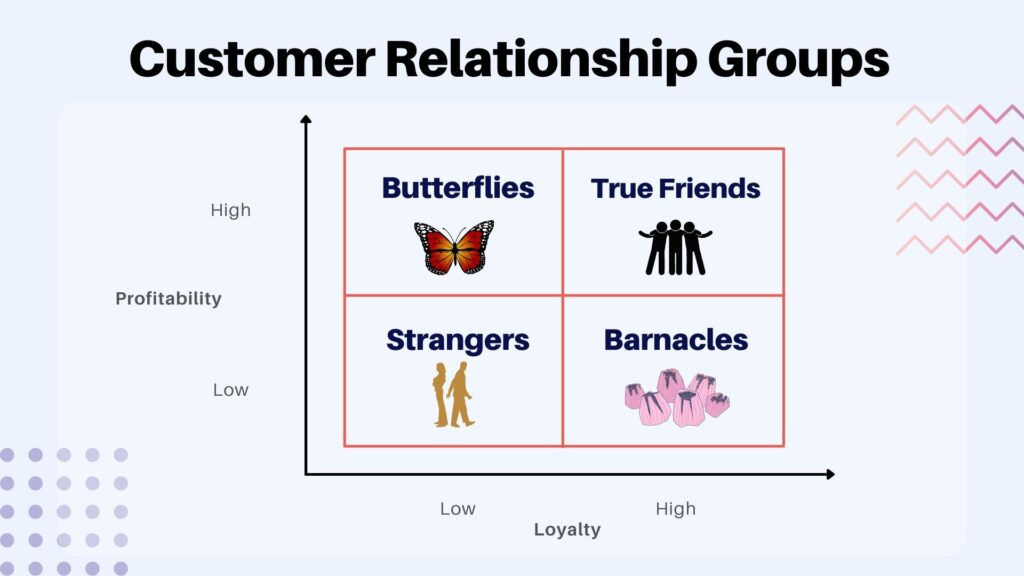What is a Customer Relationship Group?
Not all customers are created equal. Not even the most loyal ones. Ultimately companies should focus more on their profitable customers. Therefore companies classify their customers according to their potential profitability and customer loyalty. This classification is called customer relationship groups.
Categories of customers
Let’s take an example of a company with 50,000 customers. We can divide these customers into four segments based on the profit they bring in per year:
Segment 1: These are the most profitable customers because they bring in $10,000 per year for the last 10 years.
Segment 2: These are the customers that make between $5,000 and $9,999 per year in the last year.
Segment 3: These are the customers that make less than $5,000 per year in the last year.
Segment 4: These are the least profitable customers. They bring in less than $500 per year for the last 10 years.
The company can use segmentation to focus on its most profitable customers, i.e., those that make more than $10,000 per year and lower segments of less profitable customers. This is a good approach for a company that has more than 50,000 customers and the goal of growing the business to 100,000 or even 1 million customers.
Customer relationship groups model

True Friends – Segment 1
They are our most loyal customers and bring in high profitability. This shows that there is a strong product-market fit for this customer group with the company’s offerings. Ideally, you want to give your utmost attention to this segment. Listen to their needs and bring in product/service offerings to delight them. If you know Pareto’s principle, you will realize this 20% of customers will bring in 80% of your revenue. Maintaining good interpersonal relationships with this segment is essential for your business.
Butterflies – Segment 2
They are loyal customers that bring in high projected profitability but their loyalty is not as strong as the first group. Their loyalty lasts for a short period of time. Thus the name, Butterflies. Their needs are also different from those of the first group so you need to focus on different product/service offerings for them. If you want to grow your business in the very short term, this is the segment that will help you achieve it. Your marketing efforts will revolve around turning them into true friends.
Strangers – Segment 3
They are customers with little projected loyalty and bring in low profitability. There is a very limited fit with your offerings and their needs. They may be high net worth individuals or tourists who come to your country just for a short period of time and leave without spending much money on products/services offered by the company. The relationship management strategy for these customers is simple. Don’t invest anything in them.
Barnacles – Segment 4
Our long-term customers but no profit can be extracted out of them. Like barnacles on a ship, they create drag and cause hindrance to your growth. Therefore periodically you should remove this segment of customers. This will free up space for new customers to enter. Marketing strategies for them are just a waste of time and effort. Segments 3 and 4 require different relationship management strategies compared to segments 1 and 2.
Conclusion
In conclusion, the customer relationship group can be defined as a set of individuals with whom you interact regularly and share common needs, goals, and interests. As such, they provide an excellent opportunity for you to develop deeper relationships with your customers. These groups of people should be looked at as separate entities and should have their own marketing strategies designed for them. Each group has different needs and expectations which must be taken into consideration while designing a marketing strategy for them. This is an effective way to develop your business and increase your sales. Let us know in the comments below if you have any suggestions on how we can improve our blog post!
